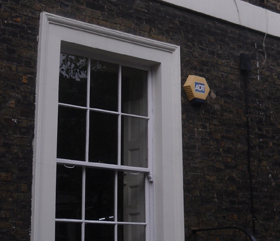The world market for residential alarm monitoring market is expected to be flat this year due to COVID-19, as the number of accounts is set to rise by a scant 0.8 percent, according to market research firm Omdia. The researchers – previously IHS Markit – had forecasted 3.8 percent growth for the year.
Blake Kozak, principal analyst at Omdia said: “In both good economic times and bad, consumers have been willing to open their wallets to spend on residential alarm monitoring—driving consistent growth in the number of accounts worldwide. However, the COVID-19 crisis is on a completely different scale than previous recessions. Not only has pandemic impacted consumer spending, but mass quarantines have inundated nearly every country across the globe. Consequently, the residential alarm monitoring industry Is destined to experience a sharp reduction in growth for the remainder of 2020.”
The pandemic is affecting regional residential alarm monitoring markets. In the Europe, Middle East and Africa (EMEA) region, account growth now is expected to total 2.5 percent in 2020; down more than half from the previous projection of 5.6 percent growth. The forecast reduction for Asia is more dramatic, with the number of accounts in the region now expected to rise by only 1.5 percent this year, compared with the previous expectation of 7.6 percent growth.
All is not lost during this quiet time for new accounts, since across the United States and in other countries, installers can rely on the 3G sunset (to update cellular back radios from 3G to 4G) to continue entering homes and engaging with customers. Partly because of this, Omdia does not expect major cancellations of existing contracts. Instead, the slowdown will be the result of less new business.
Connectivity in homes is at an all-time high; an opportunity for residential monitored security, the firm suggests. A potential upsell on connected devices, such as outdoor cameras, could help compensate for the slowdown in new contracts. Many alarm companies now are at or near their all-time highs for recurring monthly revenue (RMR).
DIY systems continue to take market share from traditional alarm providers. However, the rate of uptake of these DIY systems has not yet hit an inflection point with consumers. In fact, it’s plausible that a short-term increase in DIY systems will represent a net benefit for professional systems over the long term, the research suggests; especially as sellers of DIY systems frequently change their business models. As a result, the stability of these DIY brands can be unreliable, a phenomenon that may compel consumers to turn to professional systems vendors.
Residential alarmcompanies must send representatives to enter consumers’ homes. This will require installers to don personal protective equipment (PPE), something that could spur concerns among consumers.
Dealers will need to adapt to selling home automation and security devices that can be useful in occupied homes, since the use of offices for working could see a sharp decline for the remainder of 2020 and into 2021. This means there will be less arming and disarming of the system; so using sensors for purposes other than security monitoring could give installers and service providers an advantage, as consumers use their alarm system in a less traditional manner for longer, the researchers add.









